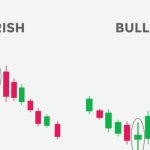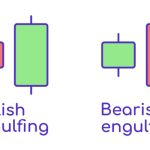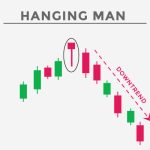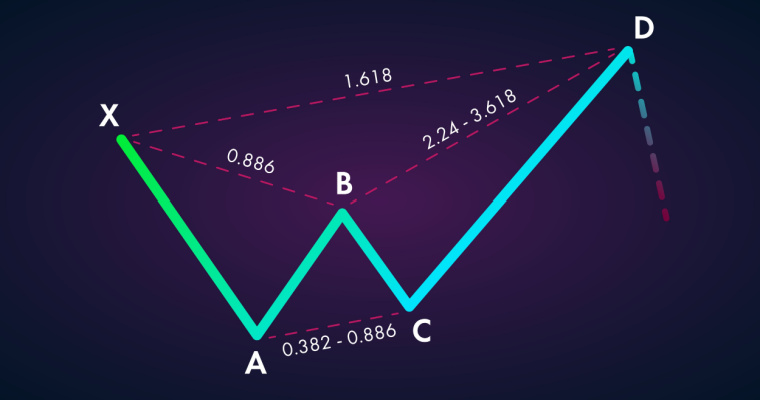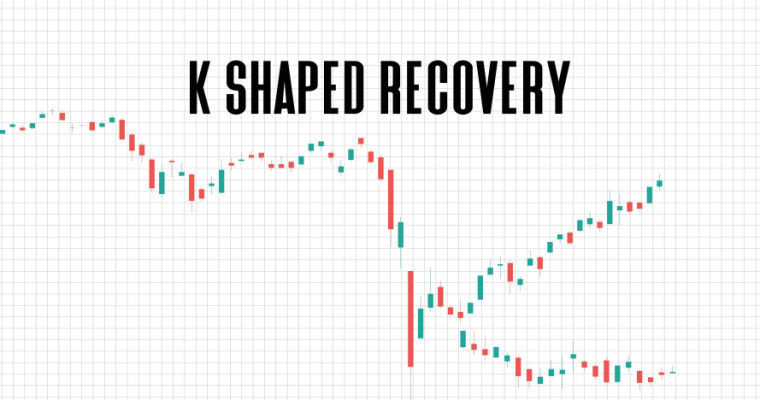What Is Tweezer Top Candlestick Pattern – Its Indication and How To Trade With It
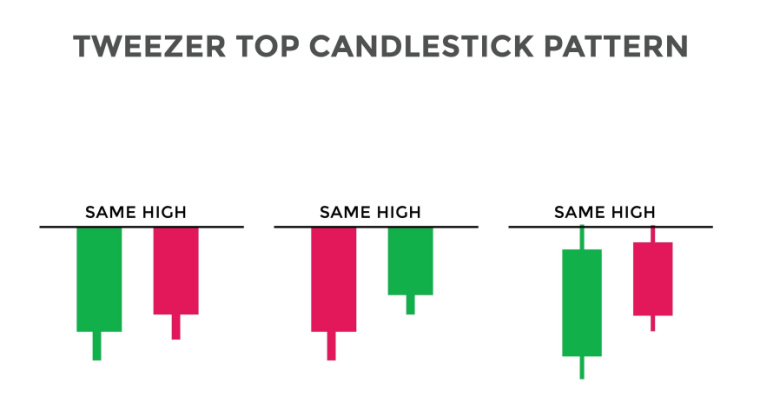
Candlestick patterns help day and swing traders analyse the performance of stocks. Tweezers are popular candlestick patterns that help in establishing trend reversal. Tweezer top candlestick occurs when the high points of two candlesticks remain the same after an uptrend. It refers to a bearish reversal (tweezer bottom refers to bullish reversal trends).
This blog is a trader’s complete guide to understanding tweezer top candlestick patterns. Read on to learn everything you need.
What Does Tweezer Top Candlestick Pattern Indicate?
There are two candlesticks present on a tweezer top. First one is a bullish candlestick which is followed by a bearish one. Markets witness a rising trend on the first day, and the second day also opens on a high note reaching highs witnessed on the previous day. However, stocks close on a weak note, represented by a large red or black candlestick.
Tweezer top patterns are quite frequent, and you can come across them quite regularly. Market analysts use this as a trading signal while dealing with broader market analysis.
Example of Tweezer Top Candlestick Pattern
Let’s delve into the working of the tweezer top candlestick with an example:
Suppose company ABC opened at Rs.250, and as the day progresses, it rises upwards. The day’s high was Rs.325, and it eventually closed at Rs.298. The second day also opened on a positive note, and the stock reached a high point of Rs.325 during the first half of the trading session.
However, as the day went on, bearish sentiments started taking over stock. The stock reversed its trend and started declining rapidly. Eventually, it closed at Rs.245, which was even lower than the opening price of the previous day.
When we put these price points on a candlestick pattern, we will get a tweezer top candlestick having a green followed by a larger red candlestick.
Formation of Tweezer Top Candlestick Pattern
Here are some criteria that should be satisfied for the successful formation of tweezer top pattern:
- Stock markets or the respective stock should be on a rising trend.
- A solid green candlestick forms on the first day.
- A red candlestick forms on the next day, which should exhibit the same highs as that on the previous day.
Also Read
What Does Tweezer Top Candlestick Tell Us?
These candlestick patterns form when there is a rising trend in the overall market or a particular stock. A green bullish candlestick forms on the first day, which represents an ongoing rise in the price of a stock.
However, the next day’s high of a bearish candlestick refers to a particular resistance level in that stock. This indicates that market optimists or bulls have increased prices to a significant level, but they are not inclined to buy more stocks at the respective price point.
Both top candles have similar highs, and it represents some degree of resistance. This resistance signals a trend reversal, and stocks will start moving downwards in the second day’s trading session.
Traders can get confirmation about the bearish reversal when they see the formation of a red candlestick.
What Are the Features of Tweezer Top and Bottom Candlestick Pattern?
First, let’s discuss some features of tweezer top patterns:
- These consist of two adjacent candles, one being a bullish candle which is followed by a bearish one.
- The first candlestick occurs due to the ongoing rising trend in markets. This bullish candle may or may not have wicks in its structure.
- The second candlestick, which is a bearish one, forms the core of the tweezer top pattern. Like the first candle, it is not mandatory for it to have any wicks.
- The high point of the second candlestick may be almost equal to the bullish candle. The downtrend in a stock occurs from the second candle.
- Traders use tweezer top candlesticks to get an idea regarding the selling signal.
Now let’s shift our focus to features of tweezer bottom candle patterns. Some features are as follows:
- It indicates a bullish reversal; the bear phase ends with the start of this pattern.
- It also contains two candlesticks, the first one being bearish and the second one bullish. The bearish candle is representative of an ongoing downtrend in markets.
- The low point of the first candle is almost equal to the low point of the second candlestick, which is bullish.
- It gives out buying signals to traders.
How to Trade with Tweezer Top Candlestick Pattern?
The formation of a tweezer top candlestick means that bulls operating in the market are not inclined to buy the stock. You can use market orders in trading these patterns. Moreover, you can also opt for a sell-stop trade just beneath the first shadow.
You can also opt for a stop loss above the candlestick. In case a bearish breakout happens, you can execute the sell-stop trade. Markets will also execute stop loss on initiation of this pattern.
How Reliable Are Tweezer Top and Bottom Candle Patterns?
As these patterns help in catching or understanding the prevailing trends in markets, they serve as reliable indicators. Investors become cautious about an impending reversal in patterns and calibrate their positions accordingly.
An occurrence of a tweezer top at swing highs is indicative of a larger trend that optimists or bulls are moving away from the market, and there’s an impending takeover by bears. In such a scenario, individuals should try to book profits and close their position. They can also move their stop-loss target towards the breakeven point.
Hence, we see that both tweezer top and bottom can help traders in making profits. However, they should not rely only on this indicator and look out for confirmatory signals by assessing other information on market volume, support or resistance levels and prevailing trends.
Also Read
What Are the Pros and Cons of Tweezer Top Candle Patterns?
Here are some advantages of using a tweezer top pattern:
1. Ease of Use
You can easily identify these patterns just by looking at them. This ease of use and convenience makes it popular and universally acceptable.
2. Occurs Frequently
This pattern frequently occurs in all time frames of the market. As they are readily available at regular time intervals, you can use them to get an idea about trend reversals occurring in a particular stock or benchmark indices.
3. Reliability
It is a highly reliable indicator of current and impending price movements. Market participants use this to analyse buyer and seller sentiments and get an idea about the functioning of overall markets.
4. Integration
Tweezers integrate well with other market tools and increase the overall accuracy of trading.
Now, let’s discuss various cons or disadvantages of using a tweezer top:
- As stock markets are quite volatile, no single indicator can be completely accurate. Therefore, you should always look out for other tools and indicators for confirmatory signals of a trend reversal.
- It may be expensive in terms of time and resources involved when you are dealing with longer time frames.
- These have limited applicability when one uses them in isolation. Its effectiveness reduces to a great extent when other indicators do not corroborate its theory.
Final Word
Tweezer top is an important trading tool that offers evidence of bearish reversal. It presents a selling signal to investors amidst an impending takeover by bears. This pattern helps traders take appropriate trading decisions when there’s a strong shift in momentum, signalling a market bottom.
FAQs
Ans: A tweezer bottom works in a completely opposite manner to a tweezer top. It indicates a bullish reversal, i.e., impending takeover by bulls. There are two candles in this pattern: the first is a red candle, and the second is a green one.
Ans: You can identify a tweezer bottom when this criterion gets fulfilled:
A downtrend is occurring in the market.
A solid red candle gets formed on the first day.
Formation of a green candle the next day, which has the same lows as the previous candlestick.
Ans: A head and shoulder pattern examines the reasons why bulls are failing to control markets and reasons for takeover by bears. However, in comparison to the tweezer top patterns, they require a lot of time for formation and are not frequent.
Ans: Investors can use indicators like Bollinger bands, moving average indicators, oscillators and pivot points along with tweezer tops to increase the accuracy or reliability of their trading.
Want to put your savings into action and kick-start your investment journey 💸 But don’t have time to do research? Invest now with Navi Nifty 50 Index Fund, sit back, and earn from the top 50 companies.
Disclaimer: Mutual Fund investments are subject to market risks, read all scheme-related documents carefully.
This article has been prepared on the basis of internal data, publicly available information and other sources believed to be reliable. The information contained in this article is for general purposes only and not a complete disclosure of every material fact. It should not be construed as investment advice to any party. The article does not warrant the completeness or accuracy of the information and disclaims all liabilities, losses and damages arising out of the use of this information. Readers shall be fully liable/responsible for any decision taken on the basis of this article.

Customer’s Feedback
No comments found.Illiquid Stocks Guide: Definition, Examples, and its Working
Illiquid stocks are part of a long-term investment strategy that is appropriate for investors who a... Read More »What is Shooting Star Candlestick Pattern in Trading?
The shooting star candlestick pattern is considered to be a bearish reversal candlestick ... Read More »What is VWAP Indicator and How to Use it for Trading
The VWAP indicator shows the volume-weighted average market price of a particular stock. You can us... Read More »What is Price Action Trading: Its Strategy, Stop Loss and Profit Targets
Price action trading is a methodology in which the trader solely relies on analysing a security’s... Read More »What is Buy the Dip Strategy in Trading – Working and Example
‘Buy the dip’ is one of the most common phrases in the stock market. It is sort of a go-t... Read More »What is the Black Scholes Model – Formula, Calculation and Assumptions
Among the important concepts in modern financial theory, the Black Scholes model, developed in 1973... Read More »What is Iron Condor and What are its Strategies?
Iron Condor is an options trading strategy that involves four options with the same expiration date... Read More »What is Harmonic Pattern and How Does it Help in Trading?
Harmonic patterns are one of the most efficient and effective trading patterns. Although they are m... Read More »What is a Contract Note and Why is it Important?
Contract note is a legal document containing the details of every stockbroker's trade on a stock ex... Read More »What is K-shaped Recovery: Indication, Example and
Economies go through multiple phases in business cycles. One such phase is a recession which is mar... Read More »Guide to Book Building – Its Types, Benefits and Process
Initial public offerings (IPOs) are priced as specified by their underwriters. The process by which... Read More »Support and Resistance in Trading: Working, Strategies, Uses and Example
Support and resistance are two of the most significant and practical concepts in technical analysis... Read More »Top 10 Chit Fund Schemes in India in 2023
Chit funds are one of the most popular return-generating saving schemes in India. It is a financial... Read More »10 Best Gold ETFs in India to Invest in April 2023
Gold ETFs or Gold Exchange Traded Funds are passively managed funds that track the price of physica... Read More »10 Best Demat Accounts in India for Beginners in 2023
Creation of Demat accounts revolutionised the way trades were conducted at the stock exchanges. It... Read More »20 Best Index Funds to Invest in India in April 2023
What is an Index Fund? An index fund is a type of mutual fund or exchange-traded fund (ETF) that... Read More »Best Arbitrage Mutual Funds to Invest in India in April 2023
Arbitrage funds are hybrid mutual fund schemes that aim to make low-risk profits by buying and sell... Read More »10 Best SIP Plans in India to Invest in April 2023
What is SIP? SIP or Systematic Investment Plan is a method of investing a fixed amount in ... Read More »10 Best Corporate Bond Funds in India to Invest in April 2023
Corporate bond funds are debt funds that invest at least 80% of the investment corpus in companies ... Read More »10 Best Bank for Savings Account in India [Highest Interest Rate 2023]
Savings account is a type of financial instrument offered by several banks. It lets you safely depo... Read More »
